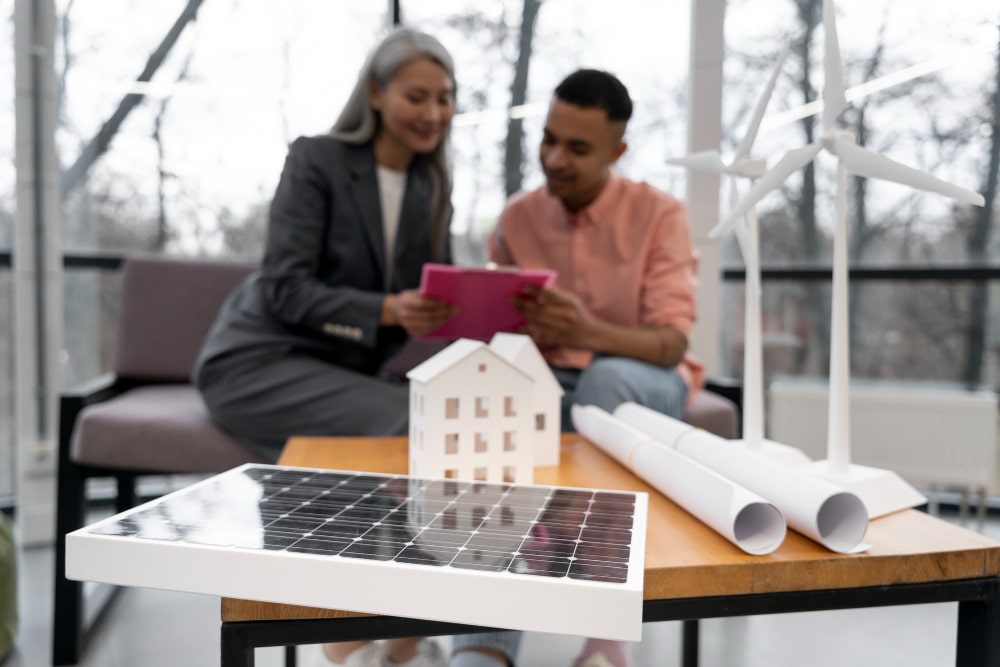The quest for sustainable and eco-friendly living has prompted many homeowners in Columbus to consider solar roofing as a viable alternative to traditional roofing materials. In this comprehensive guide, we will delve into the key aspects of solar roofing versus traditional roofs, exploring the environmental impact, cost considerations, energy efficiency, and the unique challenges and benefits of each choice.
As the capital of Ohio experiences diverse weather conditions, including cold winters and hot summers, the decision to go solar in Columbus involves careful consideration of local climate factors.
1. Understanding Solar Roofing: Harnessing Energy from the Sun
Solar Roofing Technology
Solar roofing integrates solar cells or solar shingles into the structure of the roof, converting sunlight into electricity. This innovative technology seamlessly blends aesthetics with functionality, turning the entire roof into a solar energy-harvesting system.
Benefits of Solar Roofing
- Renewable Energy Generation: Solar roofing harnesses clean and renewable energy, reducing reliance on non-renewable sources and lowering the carbon footprint of the property.
- Reduced Electricity Bills: By generating their electricity, homeowners can significantly reduce their dependence on the grid, leading to lower monthly electricity bills.
- Government Incentives: In Columbus, and throughout Ohio, there are various federal and state incentives for solar installations, including tax credits and rebates, making solar roofing more financially attractive.
2. Traditional Roofs: Time-Tested Materials with Familiarity
Common Traditional Roofing Materials
Traditional roofing materials, such as asphalt shingles, metal, or clay tiles, have been the standard for decades. These materials offer a range of styles and colors, providing homeowners with familiar and aesthetically diverse choices.
Pros of Traditional Roofs
- Affordability: Traditional roofing materials are often more budget-friendly in terms of upfront costs compared to solar roofing installations.
- Wide Variety of Options: Homeowners can choose from a vast array of styles and materials, allowing for customization to match the architectural style of the home.
- Low Maintenance: Traditional roofs generally require less maintenance compared to solar roofing systems, contributing to long-term cost savings.
3. Environmental Impact: Solar Roofing’s Green Advantage
Sustainable Practices of Solar Roofing
Solar roofing stands out as a green choice due to its inherent sustainability. The technology involves converting sunlight into electricity, promoting the use of clean energy and reducing the demand for fossil fuels.
Environmental Benefits
- Carbon Emission Reduction: Solar roofing significantly reduces carbon emissions by utilizing clean energy, contributing to a more sustainable and eco-friendly environment.
- Limited Resource Depletion: Unlike traditional roofs, which rely on mined or extracted materials, solar roofing primarily uses silicon, a readily available resource. This reduces the environmental impact associated with resource extraction.
- Long-Term Conservation: Solar roofing promotes long-term conservation efforts by tapping into a continuous and renewable energy source, reducing the strain on traditional energy grids.
4. Cost Considerations: Weighing Upfront Investment and Long-Term Savings
Upfront Costs of Solar Roofing
While the upfront costs of solar roofing installations are notably higher than traditional roofing, it’s crucial to understand the components involved in this initial investment. This includes not only the solar panels or shingles but also essential elements such as inverters, wiring, and the professional installation required for optimal performance.
Long-Term Savings
- Energy Bill Reduction: Over time, homeowners with solar roofing can experience substantial savings on their energy bills as they generate their electricity. This shift towards sustainable energy contributes not only to financial savings but also to environmental conservation.
- Return on Investment (ROI): Despite the initial investment, the ROI for solar roofing is considerable. Factoring in government incentives, reduced electricity bills, and potential increases in property value, homeowners can expect a significant return on their initial investment over the system’s lifespan.
- Financial Incentives: Beyond federal and state incentives, some utility companies offer buyback programs for excess energy generated by solar roofing systems. This creates an additional revenue stream for homeowners, further enhancing the financial appeal of solar roofing while fostering a more sustainable energy ecosystem.
5. Energy Efficiency: Solar Roofing’s Contribution to Sustainability
Efficiency of Solar Roofing
Solar roofing systems are designed to maximize energy absorption and conversion, making them highly efficient in converting sunlight into electricity.
Energy Efficiency Benefits
- Off-Grid Capability: Solar roofing allows homeowners to become partially or entirely independent of the grid, providing energy security during power outages or emergencies.
- Net Metering Advantages: In Columbus, net metering programs allow homeowners with solar roofing to earn credits for excess electricity generated and fed back into the grid, further enhancing the system’s efficiency.
- Environmental Stewardship: Solar roofing contributes to the overall energy efficiency of a community by reducing the strain on traditional power sources and promoting a sustainable energy ecosystem.
Conclusion
In the vibrant city of Columbus, the choice between solar roofing and traditional roofs involves a careful balancing act between environmental considerations, upfront costs, and long-term benefits. Solar roofing emerges as a green and sustainable choice, harnessing the power of the sun to generate clean energy. While traditional roofs offer familiarity and affordability, the environmental impact and long-term savings of solar roofing make it an increasingly attractive option for environmentally conscious homeowners.
Ultimately, the decision hinges on individual preferences, budget constraints, and a commitment to embracing sustainable practices. As technology advances and solar roofing becomes more commonplace, Columbus residents will continue to play a vital role in shaping a greener and more sustainable future for their community.
The growing accessibility and advancements in solar technology are making it an even more compelling option, aligning environmental stewardship with economic prudence. As Columbus evolves, embracing solar roofing in Columbus represents a proactive step toward a more sustainable and resilient urban landscape.






